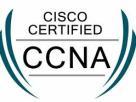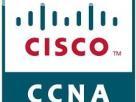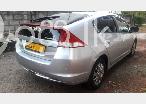Information
Additional details
Details
---------------------------------------------------------------------------------------------------------------- # Classes will be conducting using real routers and switches and student will get the access. # Covering full theory and Practical # White board and Multimedia Presentations. # Simulators and emulators use for Lab sessions (Packet Tracer/GNS3) # Exam Questions will discussing after covering the syllabus (Exam Dump will be Providing) # Roughly Duration is 6 Months,depending on how the students performs. -------------------------------- # Location : No 50,Walagamba Road,Borupana,Ratmalana. --------------------------------- Starting Date : 22nd of April 2018 (Sundays) Starting Time : 3.00 Pm - 6.00 PM Course Fees : 2500 /Rs Per Monthly basis. (Whole month only 2500 /Rs) Admission :500 /Rs Student Per Batch :10 Students Only (First Comes First In) ---------------------------------------------------------------------------------------------------------- Lecturer :Samantha Hewage (NIBM Dip,HDICBIS,MBCS,CCNA,MCSE) (Network and System Engineer :Multi-National Company) ---------------------------------------------------------------------------------------------------------- # Below is the small portion of the syllabus i have highlighted due to space Limit. ---------------------------------------------------------------------------------------------------------- 1.0 Network Fundamentals 1.1 Compare and contrast OSI and TCP/IP models 1.2 Compare and contrast TCP and UDP protocols 1.3 Describe the impact of infrastructure components in an enterprise network 1.3. a Firewalls 1.3. b Access points 1.3.c Wireless controllers 1.4 Describe the effects of cloud resources on enterprise network architecture 1.4. a Traffic path to internal and external cloud services 1.4. b Virtual services 1.4. c Basic virtual network infrastructure 1.5 Compare and contrast collapsed core and three-tier architectures 1.6 Compare and contrast network topologies 1.6.a Star 1.6.b Mesh 1.6.c Hybrid 1.7 Select the appropriate cabling type based on implementation requirements 1.8 Apply troubleshooting methodologies to resolve problems 1.8.a Perform and document fault isolation 1.8.b Resolve or escalate 1.8.c Verify and monitor resolution 1.9 Configure, verify, and troubleshoot IPv4 addressing and subnetting 1.10 Compare and contrast IPv4 address types 1.10.a Unicast 1.10.b Broadcast 1.10.c Multicast 1.11 Describe the need for private IPv4 addressing 1.12 Identify the appropriate IPv6 addressing scheme to satisfy addressing requirements in a LAN/WAN environment 1.13 Configure, verify, and troubleshoot IPv6 addressing 1.14 Configure and verify IPv6 Stateless Address Auto Configuration 1.15 Compare and contrast IPv6 address types 1.15.a Global unicast 1.15.b Unique local 1.15.c Link local 1.15.d Multicast 1.15.e Modified EUI 64 1.15.f Autoconfiguration 1.15.g Anycast 2.0 LAN Switching Technologies 2.1 Describe and verify switching concepts 2.1.a MAC learning and aging 2.1.b Frame switching 2.1.c Frame flooding 2.1.d MAC address table 2.2 Interpret Ethernet frame format 2.3 Troubleshoot interface and cable issues (collisions, errors, duplex, speed) 2.4 Configure, verify, and troubleshoot VLANs (normal/extended range) spanning multiple switches 2.4.a Access ports (data and voice) 2.4.b Default VLAN 2.5 Configure, verify, and troubleshoot interswitch connectivity 2.5.a Trunk ports 2.5.b Add and remove VLANs on a trunk 2.5.c DTP, VTP (v1&v2), and 802.1Q 2.5.d Native VLAN 2.6 Configure, verify, and troubleshoot STP protocols 2.6.a STP mode (PVST+ and RPVST+) 2.6.b STP root bridge selection 2016 Cisco Systems, Inc. This document is Cisco Public. Page 3 3.0 Routing Technologies 3.1 Describe the routing concepts 3.1.a Packet handling along the path through a network 3.1.b Forwarding decision based on route lookup 3.1.c Frame rewrite 3.2 Interpret the components of a routing table 3.2.a Prefix 3.2.b Network mask 3.2.c Next hop 3.2.d Routing protocol code 3.2.e Administrative distance 3.2.f Metric 3.2.g Gateway of last resort 3.3 Describe how a routing table is populated by different routing information sources 3.3.a Admin distance 3.4 Configure, verify, and troubleshoot inter-VLAN routing 3.4.a Router on a stick 3.4.b SVI 3.5 Compare and contrast static routing and dynamic routing 3.6 Compare and contrast distance vector and link state routing protocols 3.7 Compare and contrast interior and exterior routing protocols 3.8 Configure, verify, and troubleshoot IPv4 and IPv6 static routing 3.8.a Default route 3.8.b Network route 2016 Cisco Systems, Inc. This document is Cisco Public. Page 4 3.8.c Host route 3.8.d Floating static -----------------------------------------------------------------------------------------------------------






